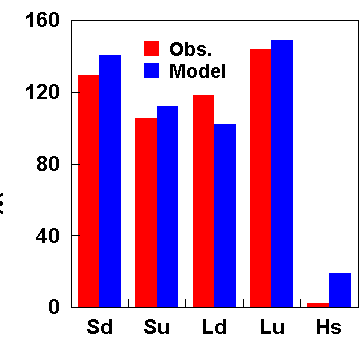Validation of the Surface Energy Balance over the
Antarctic Ice Sheets in the
UK Meteorological Office Unified Climate Model
J.C. King and
W.M. Connolley
British Antarctic Survey , Cambridge, UK.
Journal of Climate, 1997 (in press)
Abstract
We use surface radiation measurements and other climatological
data to validate the representation of the surface energy balance
over the East Antarctic Ice Sheet in the UK Meteorological
Office Unified Climate Model. Model calculations of incident
and reflected shortwave radiation are in good agreement with
observations, but the downward component of longwave
radiation at the surface appears to be underestimated by up to
20 Wm-2 in the model. Over much of the interior of Antarctica
this error appears to be compensated for by an overestimate in
turbulent transport of heat to the surface while, over the steep
coastal slopes, the heat flux is in good agreement with
observations but the surface temperature is too low. The
excessive heat flux over the interior results largely from the use
of an inappropriately large bulk transfer coefficient under very
stable conditions, suggesting that the surface heat flux scheme
in the model is not ideally formulated for the conditions which
prevail in the Antarctic boundary layer.
The diagram below shows modelled and observed annual mean energy balance
components at the South Pole, in watts per square metre.
Modelled and observed short-wave radiation
fluxes (Sd, Su) are seen to be in good agreement, while modelled downward
longwave radiation (Ld) is too small. This is compensated for by the GCM
generating an anomalously large downward sensible heat flux, Hs.

This study was carried out in collaboration with the
Hadley Centre for Climate Prediction and Research
Return to the main boundary-layer page
Page produced by John King

